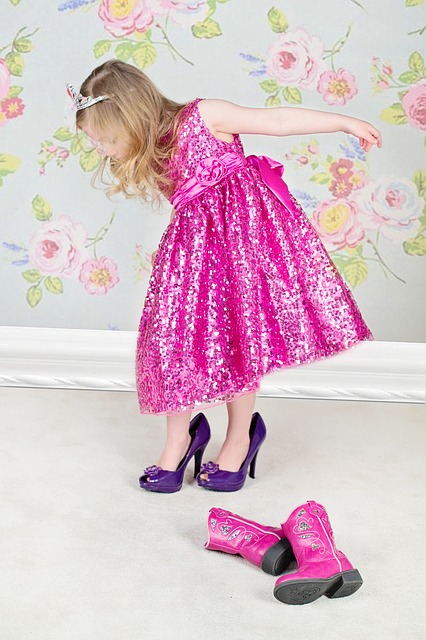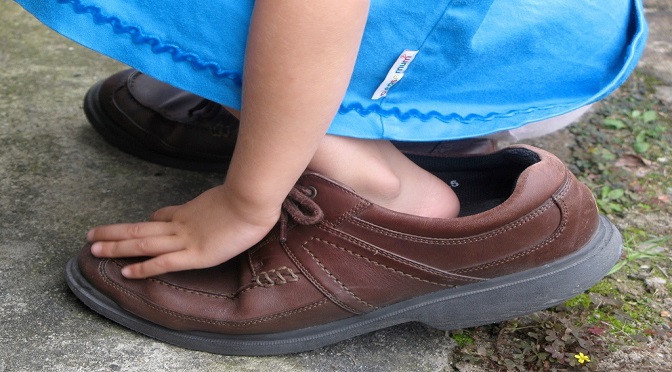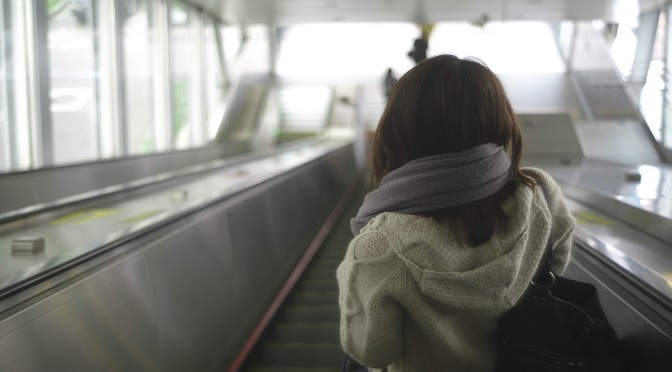Childhood innocence is becoming a thing of the past. Children and teens are growing up too fast in today’s world. Kids haven’t changed, but the world around them has changed. Children now have higher anxiety levels and learning problems caused by the tremendous pressure that is being put on them to think and speak like adults before they are even ready.
Kid’s lives today contain things inconceivable a few decades ago like cell phones, computers, medical breakthroughs, cable television, and satellites. School curriculums have been expanded to teach topics like AIDS, adolescent suicide, drug and alcohol abuse, and incest. But, so much instant communication and information can be dangerous and chaotic to children.
David Elkind, professor of child study, Senior Resident Scholar at Tufts University, and author of The Hurried Child: Growing Up Too Fast, Too Soon (1988), says:
“Our society is compressing childhood more and more to where children are not children for very long. Children are under tremendous pressure to ‘be mature’ and to ‘grow up’ when they have not had the chance to develop emotional maturity.”
In adolescence, the troubles tend to mount up. Children often develop serious behavioral and emotional problems. Some kids turn their pain against the world, acting in aggressive and inappropriate ways. However, studies suggest that most internalize everything to hide their conflicts, becoming intensely shy and withdrawn. There are so many unhealthy pressures from society and it’s a very difficult time for parents as well. It’s not uncommon in such circumstances to find children acting like adults and adults acting like children.
There are four major factors that may have contributed to this loss of childhood:
#1. The Media & Technology
The greatest impact is on pre-adolescent children who do not have the capacity to separate what is real from what is not. Television to them is a report on how the world really works. Clothing, entertainment and other products are being marketed today to young children. As a result, 8- to 12-year-old children are becoming more like teenagers, leaning more toward teen styles, attitudes and behavior.

“Children are exposed to cable television and YouTube, so they get into the rock videos at very young ages, which is really adult-oriented in terms of sexuality. A lot of sitcoms have teenage characters in them who are sexually active. Many of the magazines read by preteen and adolescent girls regularly have articles in them about how to turn guys on or what guys want in bed. And obviously there are a lot of sexually explicit websites that children can look at.”
This is quite a contrast from just a generation ago. It used to be that kids would have to go out of their way to find these sorts of materials, but now they can just turn on their television or search the Internet.
Television is not the only culprit for turning your little princesses into wannabe teenagers. The fashion and beauty industry is making money off of soliciting sexy clothing and makeup to pre-teen girls. Where did the days of dress up go?
Many parents believe it’s becoming very difficult to purchase “little girl” clothes. It’s not easy to find appropriate clothes for a little girl anymore. It seems that designers have taken the teenage styles and shrunk them down to fit the younger girls. Finding short skirts, skimpy shorts, platform shoes, and half-shirts is very easy these days!
“There’s a tremendous pressure in our society for children to become ‘sexually precocious’ at a younger and younger age,” says William Doherty, professor of family social science at the University of Minnesota and author of Take Back Your Kids (2000).
Additionally, the majority of parents blame the web for their children growing up too quickly. Social media — Facebook, SnapChat, Twitter, Instagram — are leading children to mature much faster than in previous generations.

Nowadays, Tablets and IPads are more important to children than their TVs. More than one-third of children aged 5 to 15 own their own device. The number of children with televisions in their rooms has fallen by a third in five years.
#2. Too Much Pressure
Another factor is the over-scheduling of childhood activities. Today, there is a much greater emphasis on sports and academic achievement than in the past. Parents worry that if they don’t enroll their kids in a lot of extracurricular activities, their children will miss out or be left behind. Sometimes parents involve their children in so many activities that they don’t have much time to just play, have fun and be a kid.
“The adult competitive world has invaded childhood. Children’s schedules are such that they are living with a lot of stress. Parents are expecting their kids to have responsibilities that adults should have—in this case, to live these schedules, to multitask, to prioritize time, and to be efficient in the use of time.”
Some teachers comment that students are coming to school tired every day. Kids should not have to be too exhausted because they have so many responsibilities.

Kimberly Chastain, a school counselor in Greenville, South Carolina, says she knows many elementary and middle-school children who participate in two or more extracurricular activities every day.
“They may have football or soccer practice after their last class, and that evening they have piano or dance lessons followed by swimming lessons or a club meeting. And then their weekends are busy going to soccer games and field hockey practice and tae-kwon-do.”
Many children are feeling overwhelmed. Some kids are worried that they are letting their parents down. However, a lot of parents don’t even realize all the pressure that they are putting on their children.
“They see other parents running around all the time, taking their kid from one activity to the next, and so they do it too, because it just seems like the thing to do. But you have to stop and ask yourself what this kind of lifestyle is doing to your kids. Children don’t need all the extra stress, and frankly, neither do adults.”
#3. Negative News
A third factor that’s taking away from childhood is the 24-hour/7 days a week cable news coverage that many households have access to nowadays. Children are seeing too much of the negative, often frightening news events when they’re too young to handle it. For instance, the 24-hour coverage of the Paris bombings served only to scare children and put another level of strain on them. This news can be hard enough on adults to watch, but it is a lot easier for grown-ups to handle. It’s too much for little children.
For one thing, young children may not understand that the reported events on the news are hundreds or thousands of miles away, or that they’re isolated occurrences. When children see too many negative news stories on television, they may believe that the violence is in their own city and feel scared when they shouldn’t have to be.
There are a lot of topics discussed in the evening news that young children do not need to know about. Children don’t want to play and have fun when they are scared or worried. All this fear and anxiety can take away a child’s ability to have a normal childhood and be carefree.
Of course, even if parents try to shelter their children from graphic or violent news stories, kids usually hear about it at school. Kids certainly know a lot more about adult issues these days.
#4. Latchkey Kids
The fourth factor affecting children in recent years is the growth in the number of latchkey kids—children who go home after school to an empty house. Years ago, children usually spent their after-school hours under the watchful eye of parents, relatives or neighbors.
Circumstances force most latchkey kids to act older than they are. They don’t have the supervision and support they need, so they really can’t act like children. For instance, they are often expected to start dinner, do the laundry, and perform other household chores that an older teen or parent would normally do.
Furthermore, young children left home alone can become frightened or anxious.
“Latchkey kids are not given the emotional security to play and relax and really unwind. School-aged children, even though they don’t need constant interaction with their parents, do better knowing an adult is there to provide a secure base and a protected environment.”
What’s Happening to Our Kids?
Kids are obviously growing up faster these days than they did in past generations. But, you might ask, what’s the big deal if an 8-year-old acts like a 17-year-old?
There are many reasons why children should not be rushed into growing up. First, childhood provides them the time they need to mature and learn critical lessons. When they don’t have a long enough childhood, children do not learn many important relationship and life skills.
A big part of childhood is playing with friends. This is very important because it gives children the opportunity to learn about themselves, to innovate and create, and to learn how to make independent judgments. They also learn mutual respect and how to work with others.

There are developmental ‘tasks’ at different stages of a child’s life. Children have many years ahead of them to face the tasks and developmental challenges of adolescence and adulthood. Childhood is a time to learn at school to relate to a peer group, to learn to be with brothers and sisters, to be part of a family and to play. The consumer role, the competitive ‘career pursuit’ role, the sexual role — those are meant to come later developmentally, when a person’s body and brain are developed well enough. The child’s brain and body are not developed well enough to handle these pressures.
When children are rushed into growing up or who have too many adult-type pressures put on them before they are ready, they can develop stress-related health problems like eating and sleeping disorders, nervousness, hyperactivity, and headaches and stomach issues. Also, they are at risk for social and behavioral problems, smoking issues, academic problems, early teen pregnancy, and drug and alcohol abuse.
Even if they don’t develop any of these problems, children who are hurried out of childhood still miss out on a lot of the simple pleasures of growing up. They miss the innocent fun and happy experiences that they should be able to look back on.
“Play gives children a sense of enjoyment that they can call upon later in life. When they’re adults and feeling down or stressed, they can remember those happy, carefree times when they were children. These childhood experiences give us a storehouse of memories that we can fall back on when we’re adults. But when we overwork and overpressure our kids, they don’t develop that storehouse of happy memories.”
Children who are rushed around and don’t have enough time to play and rest may not even know how to relax when they become adults. It is teaching children to be rushed all the time and not understand about just enjoying a quiet moment.
What Should a Parent Do?
As a parent, you can help your child grow up at his or her own pace. The key is not to put it on the back burner. If you wait, it may be too late or it may never happen. If changes need to be made in your child or family’s lifestyle, start implementing these changes today. Talk to a specialist about the proper tools to use to process and prioritize the pressures and complexities of growing up amidst today’s technologies, social media, school environments and social structures. It’s critical that you do—for your sake and your child’s.
This information is provided to supplement the care provided by your physician. It is neither intended nor implied to be a substitute for professional medical advice. CALL YOUR HEALTHCARE PROVIDER IMMEDIATELY IF YOU THINK YOU MAY HAVE A MEDICAL EMERGENCY. Always seek the advice of your physician or other qualified health provider prior to starting any new treatment or with any questions you may have regarding a medical condition.





